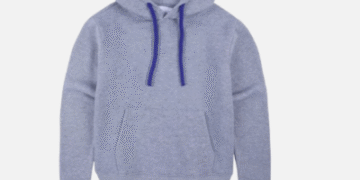In an age where trends arrive and leave quicker than a scroll on your Instagram page, something classic is sweeping its way back into the spotlight, farshi shalwar. Once synonymous with royal elegance and vintage charm, this full silhouette has come back to life, powdered in nostalgia and sewn into its relevance by today’s fashion icons and designers.
But what is behind this sudden retro Pakistani fashion revival and is it merely a wedding trend, or the beginning of something more lasting?
The Royal Origins of Farshi Shalwar
Years before it appeared on fashion ramps or wedding look books, the farshi shalwar was the attire of kings and queens. Defined by its flared, floor-length drape and heavy fabric, the silhouette was the go-to among Mughal empresses. Tailors would take yards and yards of lavish fabric usually jamawar or silks to create these regal bottoms. The outcome? A dress that not only followed movement, it enhanced it, making every step a statement. Today’s fashion designers haven’t changed its DNA too much, and fortunately so. The beauty of farshi shalwar is in its grandeur, and its return maintains just that, with a slightly updated fit and playing of fabric.
And don’t forget the destination weddings and lavish affairs that require equally show-stopping attire. In those environments, a cigarette pant just doesn’t have the same wow factor as a farshi shalwar.
A Canvas for Expression
Yet another reason why farshi shalwars are back? Their versatility. While historically matched with long kameez or angarkhas, contemporary interpretations take liberties. You may find them with a short decorated kurti, a velvet cropped jacket, or even a sheer peplum blouse, providing a new silhouette for those willing to push the boundaries.
And besides, farshi shalwars are no longer a bridal exclusive. As a bridesmaid, dholki attendee, or someone who simply wants to ditch formulas, this vintage piece is your playground. Wear it with jhumkas and kohl-lined eyes for an entirely vintage vibe, or dial it back with simple accessories and a boxy bag for a modern touch.
Textile Trends and the Designer’s Role
A portion of the farshi revival can be attributed to the renewed popularity of handloomed fabrics. Traditional crafts such as gota work, hand embroidery, and mirror decorations have been restored to the fashion forefront, ideally harmonizing the large sheet of canvas of a farshi shalwar.
One can’t help but notice the designers who have poured time and resources into bringing these lost silhouettes. With mood boards soaked in heritage and runways that reflect culture-infused storytelling, these designers brought back nostalgia for old South Asian fashion. A recent line caused a stir with its vintage embroidery, hand-stitched details, and show-stopping farshi cuts that appeared straight out of a period drama, without appearing out of time in 2025.
Style Tips: How to Wear It Today
If you’re thinking of hopping onto the trend, here are a few tips to carry the farshi shalwar with poise:
Balance the volume: Since the bottom is flared and flowy, keep the top more structured. Peplums, fitted jackets, or a belted waist can help define your frame.
Choose lighter fabrics: For casual or semiformal events, opt for georgette or chiffon blends rather than heavy brocades.
Shoe matters: Block heels or classic khussas are ideal. Just be sure your hem doesn’t drag or cause you to trip.
Mind your length: Your farshi must delicately kiss the ground, not sweep it. Have the length perfectly hit, especially if you will be dancing!
Last Thoughts: A Trend That Persists?
While it’s also true that most retro trends come and go as fast as they arrive, the farshi shalwar has deeper roots. It’s not just a fashion piece, it’s a statement about culture. With Gen Z and millennials more and more into fusion fashion, modest shapes, and going back to identity-based styling, it’s not just a return, it’s a reclaiming.
So the next time you’re preparing an outfit that requires a bit of drama and plenty of tradition, bypass the readily obvious options. Opt for volume, heritage, and a shape that has moved down the courts of queens and now sashays down the runways and weddings of today. The farshi shalwar is making a comeback. And it’s not leaving anytime soon.























